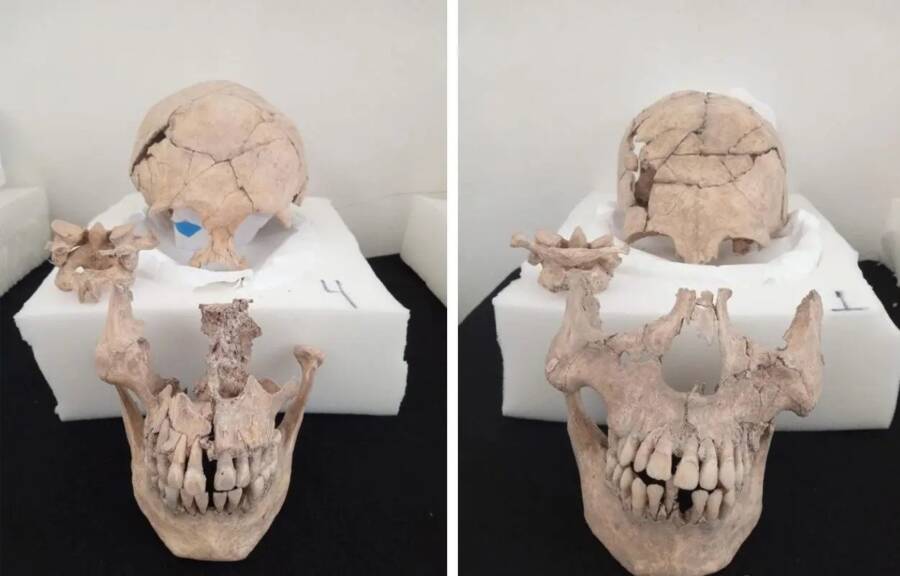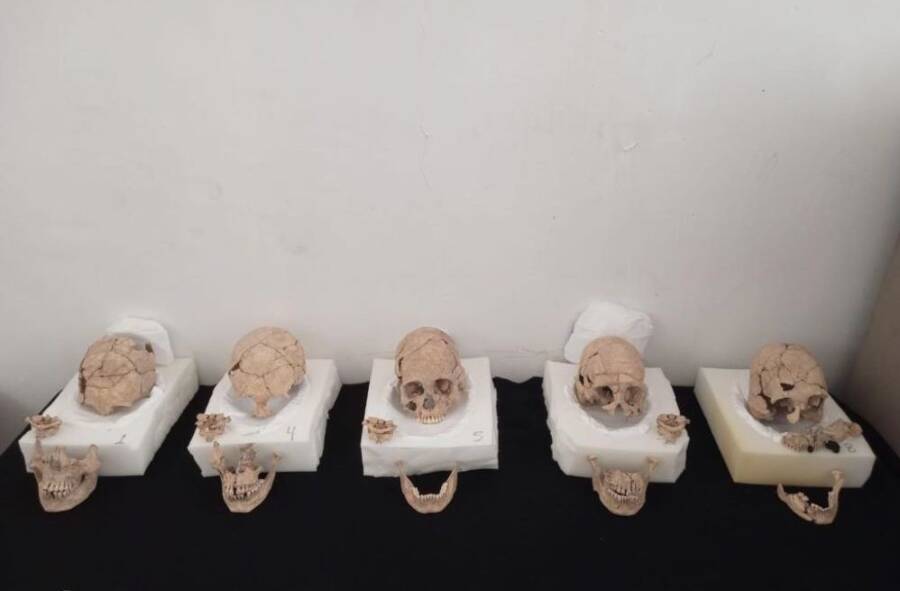Researchers made the discovery while excavating the Moral-Reforma archaeological site near Tabasco, Mexico, and they believe that the burials date between 600 and 900 C.E.

Miriam Angélica Camacho MartínezThe archaeologists found 13 bodies, at least two of which appeared to have been victims of ritual sacrifice.
Hundreds of years ago, two young men in present-day Mexico were ritually beheaded and buried at the base of a Maya pyramid. Their remains — and those of other young men who may have also been sacrifice victims — were recently discovered by archaeologists excavating the Moral-Reforma archaeological site in the Mexican state of Tabasco.
According to a statement from Mexico’s National Institute of Anthropology and History (INAH), the 13 sets of remains were discovered just 40 feet from Structure 18, a pyramidal monument south of the site’s main temple. Archaeologists found the bones buried about a foot deep and set out to determine who they belonged to and what had happened to them.
As Live Science reports, the Maya were known to sacrifice prisoners of war, but it’s unknown if these men were captives. They were all between the ages of 17 and 35 years old and appear to have been buried between 600 and 900 C.E.
And two of the skulls bear definite marks of violence.

National Institute of Anthropology and History (INAH)Of the 13 sets of remains, at least five underwent intentional skull deformation — and at least two were ritually sacrificed.
As INAH explains, “horizontal cut marks were observed in the axis, a bone involved in the craniocervical junction.” Miriam Angélica Camacho Martínez, a physical anthropologist from the INAH Tabasco Center, elaborated that these marks across the bones seem to suggest “the use of a sharp object to extract the skull, and we know this because the cervicals and the mandible maintained their anatomical relationship, although it is difficult to determine if this injury was the cause of death or if it was done post mortem.”
The archaeologists also determined that five of the skulls had been intentionally elongated. As Live Science reports, this purposeful deformation was practiced by the Maya, as well as by other ancient civilizations in Asia, Europe, and the Americas. Researchers believe that the skull elongation may have been tied to an elevated social status.
Otherwise, an examination of the remains also suggested that some of the men had suffered from cavities, likely because of their corn-heavy diet, and that some of the bones were covered in red pigment.

Alfonsobouchot/Wikimedia CommonsThe main pyramid at the Moral-Reforma archaeological site near Tabasco, Mexico.
The remains of these 13 men offer a fascinating look at life and death at Moral-Reforma, which was once an important Maya settlement. As Heritage Daily reports, the city began as important trading post around 300 C.E. and grew from there. Between 622 and 756 C.E., the settlement reached its peak and sprawled across an impressive 215 acres, where the Maya built palaces, plazas, and pyramids. They ultimately abandoned the city around 1000 C.E.
That said, there’s still much that archaeologists don’t know about the site, including its original name. Live Science reports that it was allied with other Maya cities, including Calakmul and Palenque, and that the Maya built as many as 76 structures there. However, though Heritage Daily notes that the men buried at the base of Structure 18 may have been sacrificed to appease an underworld deity, it’s unknown which Maya god the pyramid was meant to honor.
As archaeologists continue to explore the site, they hope to uncover more answers. Until then, researchers will have to look for clues in the bones and teeth of the men sacrificed at the pyramid hundreds of years ago.
After reading about the 13 skulls found buried at the base of a Maya pyramid in Mexico, see how a Maya city lost to the jungle was recently rediscovered in the Yucatán Peninsula. Or, go inside the surprising find that the Maya turned their rulers’ remains into rubber balls and then used them for games of pelota.





